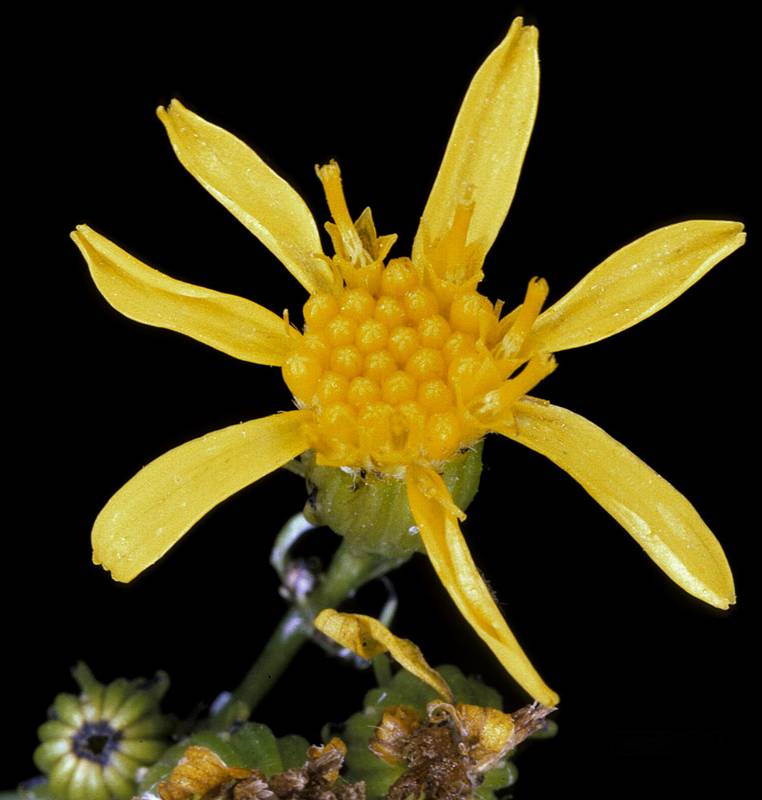Hosted by the University of Washington Herbarium, Burke Museum
Publication: Mem. New York Bot. Gard. 1: 441. 1900.
Origin: Native
Herbarium search: CPNWH
Notes: FNA20: "Plants of Senecio hydrophiloides from toward the western end of the range tend to have the heads more or less congested and eradiate and stems loosely clustered; plants from toward the eastern edge tend to have heads loosely arrayed and radiate and stems single. The two forms have been recognized as weakly defined species (or varieties), the former as Senecio foetidus and the latter as S. hydrophiloides. They intergrade so completely that they are best treated as a single, variable taxon. The use of the epithet foetidus for the broadly conceived single species was based on a bibliographic misunderstanding; the correct epithet is hydrophiloides (T. M. Barkley 1978; A. Cronquist 1994).
In 1900, Thomas Howell gave the name Senecio oreganus to a collection from Lake Labish, near Salem, Oregon. The area has seen much disturbance and development since Howell\'s time, and the plant appears to be extinct in the region. The collection is difficult to exclude from S. hydrophiloides, and the collection is here regarded as an odd outlier of S. hydrophiloides, which is known chiefly from east of the Cascade uplift. Howell\'s collection and therefore the name S. oreganus also have been treated within S. sphaerocephalus (T. M. Barkley 1978; A. Cronquist 1955); that attribution appears to be in error. The "type" materials are now in the herbarium of Oregon State University in Corvallis."
Last updated 11/16/2020 by David Giblin.

